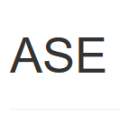计算机 | 1区SCI期刊专刊信息1条
数据库管理与信息检索
Information Fusion
Special Issue on Advances in Multimodality Data Fusion in Neuroimaging
全文截稿: 2020-05-01
影响因子: 6.639
CCF分类: 无
中科院JCR分区:
• 大类 : 工程技术 - 1区
• 小类 : 计算机:人工智能 - 2区
• 小类 : 计算机:理论方法 - 1区
网址: http://www.journals.elsevier.com/information-fusion/
Neuroimaging scans, also called brain imaging scans, are being used more and more to help detect and diagnose a few medical disorders and illnesses. Currently, the main use of neuroimaging scans for mental disorders is in research studies to learn more about the disorders. Brain scans alone now are commonly used to diagnose neurological and psychiatric diseases, such as Meningioma, Multiple sclerosis, glioma, Huntington’s disease, Herpes encephalitis, Pick’s disease, Schizophrenia, Alzheimer’s disease, Cerebral toxoplasmosis, Sarcoma, Subdural hematoma¸ etc.
To increase the diagnosis accuracy on neurological and psychiatric diseases, multimodal data fusion of neuroimaging scans is expected, as it brings together data from multiple modalities into a common reference frame. In the modern sense, multimodal data fusion is frequently taken to mean the integration of the multimodal 1D/2D/3D/4D data in a common reference anatomical space through co-registration using various image processing methods. The sources of data modalities are from a wide variety of clinical settings, including electrocardiography (ECG), electroencephalography (EEG), magnetic resonance imaging (MRI), magnetic resonance spectroscopy (MRS), electrocorticography (ECoG), functional MRI (fMRI), positron emission tomography (PET), diffusion tensor imaging (DTI), Single Photon Emission Computed Tomography (SPECT), and Magnetic Particle Imaging (MPI).
The main aim of advances in multimodality data fusion in neuroimaging is to exploit complementary properties of several single-modality scanning protocols in order to improve each of them considered separately, so as to improve the diagnosis accuracy of neurological and psychiatric diseases. This special issue aims to provide a forum for academic and industrial communities to report recent theoretical and application results related to Advances in Multimodality data fusion in neuroimaging from the perspectives of theories, algorithms, architectures, and applications.
Manuscripts (which should be original and not previously published either in full or in part or presented even in a more or less similar form at any other forum) covering unpublished research that report the advances in multimodality data fusion in neuroimaging are invited.
The manuscript will be judged solely on the basis of new contributions excluding the contributions made in earlier publications. Contributions should be described in sufficient detail to be reproducible on the basis of the material presented in the paper and the references cited therein.
Topics appropriate for this special issue include (but are not necessarily limited to):
New techniques, models, algorithms, and clinical experiences for multimodality data fusion systems
Deep learning models for multimodality neuroimaging data processing
Feature fusion for multimodality intelligent systems
Shared multimodality representation learning
Improved algorithms for multimodality neuroimaging data fusion systems
Analysis on big multimodality data fusion
Hierarchical intelligent systems for multimodality data fusion
Multimodality data fusion applications for neuroimaging
Multimodality data fusion applications in audio areas
Multimodality data fusion applications in computer vision related areas
Signal processing on graphs for fusion methods
Computational issues in fusion methods for real-time bio-signal analysis
Heterogeneous sensor fusion in big neuroimaging data context
Tensor methods and constraint techniques for multimodality data fusion
广告
登录查看更多
相关内容
专知会员服务
17+阅读 · 2019年12月2日
Arxiv
12+阅读 · 2020年6月10日
Arxiv
16+阅读 · 2020年1月2日
Arxiv
4+阅读 · 2018年10月4日





